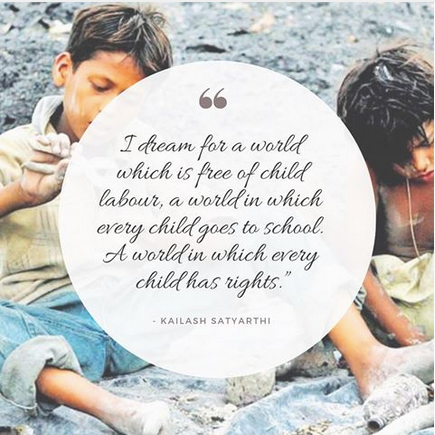
Slow Fashion
Hey everyone, Melanie here with sariKNOtsari! This week on the blog we are talking about SLOW FASHION. I am so excited to share this with you and as I learn more about it I can’t wait to share it with you all.
So, in order to understand slow fashion we first need to understand fast fashion. We’re going to quickly talk about the problem with fast fashion. So this is what we as consumers understand to be fashion in our everyday lives. For example, you go to the mall and you find let’s say 5 shirts, they are each $5-10, very on-trend, you love them, pick them up, bring them home. And I’m guilty of this too. You wear them a few times...you probably don’t even wear all of them. And then in a few months the trends are already changing. We want to be trendy and look hip so we go back to the mall and pick up some new stuff….some dresses, some pants.
And the cycle goes on and on. This is fast fashion consuming.
It doesn’t seem like a huge problem. If you’re thinking “Well if I don’t wear something, I can donate it. What’s the problem with that? It helps someone who maybe can’t afford things from the mall and I get to go buy something new because I just donated something!”
Well actually, there is a big problem with this industry. It starts at the production end of things...social and environmental impacts. Environmentally, 1 kg of fabric produces 23 kg of greenhouse gases. Just think about that. 1 to 23 ratio of greenhouse gases. There’s also thousands of litres of water that are put into production to make new fabric.
You may not know this (I didn’t learn this until Priya, our founder, told me this week) but oil is the #1 pollutant, most people know that in our world, but fabric production is the second biggest pollutant in the world. SECOND BIGGEST. So every time we go to the mall or we go to different stores and buying cheap fabric, we are contributing to that environmental impact.
Also socially, we all remember a few years ago Rana Plaza in Bangladesh collapsed, a bunch of workers died from that (1100 to be exact!). When you buy things that are $5 or $10...we can’t have the same restrictions or policies in place to ensure that those places are safe. We don’t know if the workers are in a safe environment or a clean environment, if they’re getting breaks etc.
So what can we do to change this? We are done talking about the problem...we know about the problem.
There is a solution! And buyers have a huge power...a huge impact in this world of consumerism!
So let’s first talk about some alternatives. The first alternative is just wearing what you already have. 20% of clothing is what we wear. In our closets, we are only wearing 20%...most of us. And I’m guilty of this too. We find our favourite pieces, we know they look good on us, they feel good and we just wear them all the time. So just start with wearing more, mix and match, finding different combinations. Wear what you already have.
And if you can’t do that, maybe borrow something. If you have an event and you need a new dress, instead of buying one, maybe your friend has a really cute one. Or there’s some cool organizations now (Trusted Clothes out of Waterloo) where you can swap. Clothing swaps are happening locally all the time and you can borrow clothing through these companies (Boro It in Toronto). It’s a great new model.
Another thing you can do is go to the thrift store and pick up stuff from there. That’s another great option. Maybe make something yourself? Old school...sew it yourself!
And if none of those alternatives work for you, that’s fine. If you have to buy something...maybe you have to buy a gift for someone or you have to buy something for yourself...shop ethically!
If you have to do it, do it ethically. I always say vote with your wallet. So I’m gonna be biased because now I’m learning more about sariKNOTsari and I love them! So I’m going to talk about their clothing brand.
So Priya, our founder, went to India and found two family-run businesses that make our clothing using upcycled Indian saris. They are cotton saris and silk saris that they turn into dresses, shirts, pants, tops, everything.
And if you are wondering, “Well what about the scraps from those? Don’t those go in the garbage?” No! They use the scraps, as well! This is amazing to me. They use it for gift wrap, for scarves, they use it for bunting which is a decoration you can have in your house.
So they are upcycling fabric, they are using the scraps to make more products, and then even better, they also support social change. $1 from every purchase of sariKNOTsari goes to Save the Elephants which is an organization that works on elephant conservation.
So you have these three amazing things that this organization does that you can use as a buyer. Use your power...shop ethically instead of supporting fast fashion.
And everything is on sale right now...it doesn’t get better than that!
So...that’s my little blog for this week. Next week, let me know what you want to hear about. What I’m thinking is...shopping locally, thinking globally… talking about my favourite places in Hamilton to do this.
So stay tuned for next week, thanks for watching this week. Bye!


